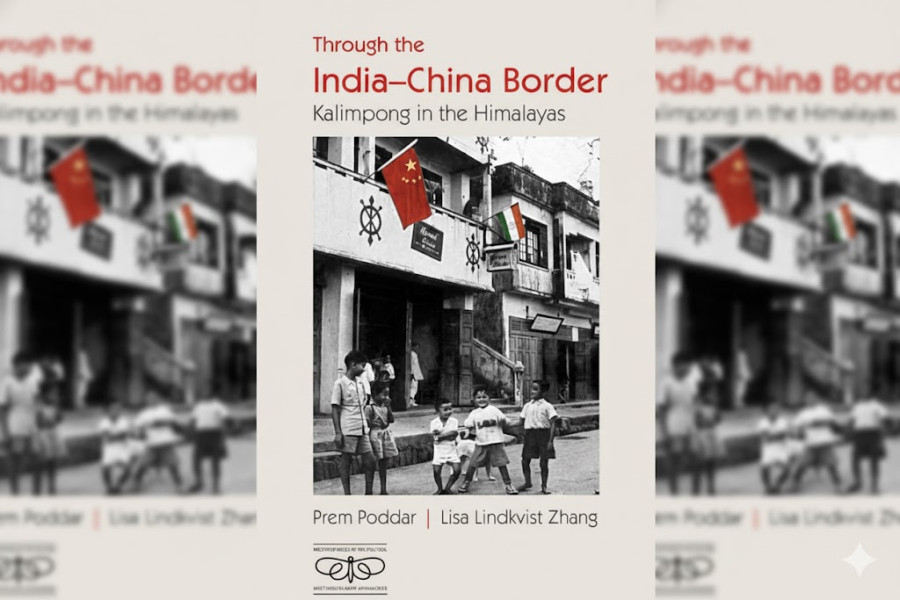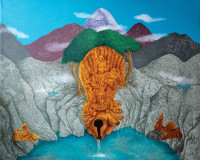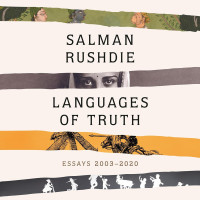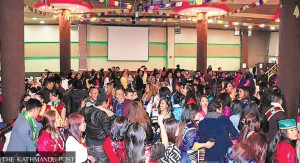Books
Kalimpong uncovered: Borders, diasporas and hidden histories
‘Through the India-China Border’ fills the longstanding gap in scholarship on Kalimpong.
Anmole Prasad
Putting a context on Kalimpong, with its picturesque location and its rich, layered past, one is allowed to wax eloquent—more so when that context is pitched against the backdrop of that twentieth-century behemoth to the north, China. And the book under review here, Prem Poddar and Lisa Lindkvist Zhang’s ‘Through the India-China Border: Kalimpong in the Himalayas’ (CUP, 2025) sets out to do just that.
While Kalimpong shared topographical and historical similarities with contiguous Darjeeling—until recently its administrative headquarters since the late 1800s—the resemblance ended there. Darjeeling, that darling of the Raj, was originally envisaged as a military sanatorium that metamorphosed, quite quickly, into a playground for the wealthy and a summer capital for the powerful, a glittering centrepiece to the lush tea “gardens” founded by Empire’s capital and a home away from home for homesick Europeans pining for a cooler clime. Palaces, villas, mansions, promenades, hotels, rinks and clubs dotted Darjeeling’s steep slopes and the inevitable mall; a clock tower and a racecourse completed the picture.
The trajectory of murky, messy Kalimpong was somewhat different. Wrested from Bhutan in 1865 following a series of punitive British expeditions in response to a complaint by the Rajah of Cooch Behar, whose northern borderlands bore the brunt of Bhutanese marauders, the tract that became Kalimpong comprised both mountain and terai, but shared no resemblance to the contiguous co-annexed Duars that was a flat, forested region along the southern foothills of Bhutan, stretching all the way into Assam.
The British mangled the tract’s original name, Dalimkote, to just Daling, and even Darling, but that did little to endear it to the powers of Imperial Bengal as Darjeeling did. And so Kalimpong eventually found itself a lesser place in the district of Darjeeling, initially as an administrative block and later as a subdivision in 1916.
Kalimpong perched along a ridge that pointed directly at the heart of the Chumbi valley, now in China, where British trade agents were already in situ in the early part of the last century. It lined up with the trading centres of Tibet over the Jelepla pass in the high Himalaya and was uniquely placed as an entrepot for trade, espionage, proselytism and, above all, for advantage in the Great Game. And always, on the horizon of the highest plateau, loomed China –sometimes a fragmenting empire or a nation riven by civil strife or a rising decolonial power.
From its humble beginnings as a hamlet, where Ashley Eden’s mission to Bhutan paused on the 4th of January 1864, to “muster their coolies and re-arrange the baggage,” Kalimpong burgeoned into a bustling booming trading post, a terminus for missionaries frustrated in their efforts to burrow into Tibet.
It became a launch point for the great expeditions to Central Asia, a listening post for agents of the paranoid Great Powers forever enmeshed in the Great Game, a haven for dissidents and émigrés, a laboratory for cranium-calibrating anthropologists and teemed with secret agents, adventurers, land-hungry farmers and fortune-hunters from across and beyond the subcontinent.
And fortunes were indeed there for the making, as would be seen from the life of many a Marwari or Newar trader whose rags-to-riches story sucked a hundred other aspirants into the economic vortex of Kalimpong. From Tibet, Kham and China, other great trading houses such as the Pangdasang and Sadutsang families plugged into the vast mercantile networks of the Empire, descending from Tibet and China with muletrains laden with wool and tea and silver.
It is unsurprising, therefore, that since the beginning of the last century, this rambunctious border town and its Sino-Tibetan entanglements find mention in a substantial body of writing, not just in the arid confines of the state archives but also in the travelogues, memoirs, biographies, novels and romances of both itinerants and resident writers. Some accounts that come to mind are David Macdonald’s Twenty Years in Tibet, René de Nebesky-Wojkowitz’s Where the Gods are Mountains, Hsiao Kimura’s Japanese Agent in Tibet and lest we forget, Kiran Desai’s The Inheritance of Loss. A cursory search on the net also throws up a conceptual Kalimpong in London-based artist Shezad Dawood’s eponymous art project whose connections to the ‘real’ Kalimpong are as tenuous as are Dali’s melting clocks to the Swiss horological industry. Elsewhere too, Kalimpong appears online, startlingly, as a label for trekking pants and adventure wear.
Of late, growing scholarly interest in niche areas of plantation economies, environmental history, anthropology and politics has yielded a considerable body of work on the region. Yet a vacant space remained for an intellectual examination of Kalimpong as an interface—and of the knowledge produced and counter-produced about India—and by India—during its cultural, economic and geopolitical engagement with Tibet and China.
That particular table is now taken by ‘Through the India-China Border,’ which fills the longstanding gap in scholarship on Kalimpong. The choice of title is deliberate, for the book analyses Kalimpong's “translocal and transregional character” and its role in shaping the border politics of India and China through the looking glass.
Tracing the early development of Kalimpong through colonial and Chinese sources, the authors conceive the town as an interface whose intimate connections with Tibet and China made it a “threshold” to both forbidden lands—a space through which “things happen.”
The authors’ research into the Chinese archives, their account of the struggle between the PRC and the GMD supporters for control of the Chung Hwa School in Kalimpong as well as interviews with people of Chinese descent who lived in Kalimpong around the time are woven together to propose that Kalimpong could be viewed as a barometer and a “metonymic stand-in” for Sino-Indian relations of the time, in other words where, in these Chinese representations, Kalimpong stood in for India. The metonymy also demonstrates how the capital of Delhi and Beijing conduited a great deal of their squabbles through the ‘periphery’ of the Kalimpong space.
No ‘Kalimpong’ book could claim completeness without referencing the impact of its trade and espionage in driving state policy on either side of the Himalayas. The authors rely upon archival work from both British and Indian Intelligence Bureau records, complemented by ethnographic fieldwork conducted in Shangrila, Yunnan and Kalimpong between 2016 and 2017. They reinforce their arguments further through the microhistories of two figures, the Headmaster Shen Fumin of the Chung Hwa School and the trader and tycoon Ma Zhucai of the Ancient Tea Horse Road. Both men lived and worked in Kalimpong. Both, independently of each other, became the cynosure of attention and the object of surveillance and investigation by British and, later, Indian intelligence. The British suspected the headmaster of being a Chinese agent, part of a network of spies in Kalimpong, and the trader-tycoon of being a smuggler and holding Communist sympathies.
While Shen was eventually allowed to continue in Kalimpong and retired as an art teacher, Ma retreated to China after a prosecution in 1962 for murder failed to frame and convict him. He received a hero’s welcome in China and was modestly celebrated as a patriot abroad, wronged and mistreated by the Indian state.
Poddar and Zhang do not stop at researching and documenting these two fascinating microhistories but traverse even further by analysing how transcultural identities in Kalimpong affected and responded to the state of play in both countries and how, through them, Kalimpong itself became “a space that transcends its own locale”.
In an era of Trumpean uncertainties and the congealing of nations into global blocs where ideas of borders and boundaries, race, religion and difference are used discursively to unify-and divide, this is a timely book. It demonstrates how representations and perceptions can be artificially moulded to align with anxieties and exigencies of the global moment. Using Kalimpong as a theodolite, the authors also plot some subaltern trajectories that hold out hope for a future in which interconnectedness and shared identities and, one may add, shared climates and the commons may consolidate to collectively stem that tide.
Published in special arrangement with TheWire.in
_________
Through the India-China Border: Kalimpong in the Himalayas
Authors: Prem Poddar, Lisa Lindkvist Zhang
Publisher: Cambridge University Press
Year: 2025




 9.12°C Kathmandu
9.12°C Kathmandu











